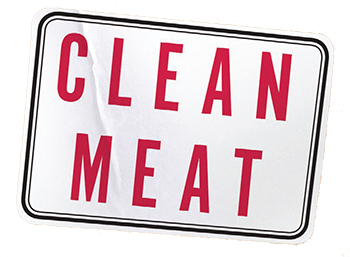Cultivating Meat for a Better Climate
In December 2022, Ohio State University (OSU) published new data on hybrid beef products. Funded by the San Leandro, California-based startup SCiFi Foods, the life cycle assessment (LCA) was published in the peer-reviewed journal Sustainability. Conducted by a team from the OSU Department of Chemical and Biomolecular Engineering, the assessment compared the environmental impact of a blended burger with that of a conventional (slaughter-based) beef patty.
What is a blended burger?
Made up of 17 percent cultivated meat, 33 percent plant-based ingredients, and 50 percent water, the blended burger required 39 percent less energy to produce than a burger from a slaughtered cow. In addition, it required 90 percent less land, generated 87 percent fewer greenhouse gas emissions, and consumed 96 percent less water.
What is cultivated meat?
Cultivated meat is produced by replicating the biological process of cell growth via a process known as “cellular agriculture." Although the end product is animal meat, the production method differs significantly from conventional farming, eliminating the need to breed, raise, and slaughter animals. In cellular agriculture, animal cells are grown in a cultivator. Also referred to as a bioreactor, the cultivator provides a clean, temperature-controlled, closed environment for the cells to grow into meat.
Cellular agriculture replicates natural processes that occur within animals. Meat cultivation is achieved through biomimicry, using developing technologies to mimic natural processes. It’s possible to cultivate meat from the cells of any animal.
Where does cultivated meat come from?
Currently, the process of cultivating meat begins with “starter cells" sourced from living animals. The harvesting process is harmless to the animal, only requiring a small skin sample or muscle biopsy from a healthy living creature. In time, the industry hopes to create cell banks to facilitate large-scale research and production. These cell banks would store cells from a variety of species at very low temperatures, including cells suitable for cultivating different meat products. Cell banks would screen and certify cells for quality. Embryonic stem cells could be particularly valuable, since these multiply easily, growing into any type of cell.
How does cultivated meat benefit the environment?
Some aspects of post-production meat processing, such as packaging, cold storage, and distribution, are going to be just as energy intensive with blended meat as they are in conventional meat processing. However, the Ohio State University team’s analysis suggested that the environmental footprint of blended burgers was comparable with commercialized plant-based burgers currently available on market. Meanwhile, in comparison with a 100 percent slaughter-based beef patty, the environmental benefits of the blended burger were considerable.
Speaking with FoodNavigator-USA, SCiFi Foods cofounder Joshua March pointed out that the Ohio State University study adds to a small body of research in the field, helping to address questions surrounding the environmental impact of cultivated meat. However, as March pointed out, it is one thing to say something is better for the environment, and another to back up those claims with data published in a peer-reviewed journal.
Will these findings translate to the real world?
Bhavik R. Bakshi, a professor of chemical and biomolecular engineering at Ohio State University, coauthored the paper. When asked how reliable the data was, he explained that the analysis was based on laboratory and pilot plant data. Professor Bakshi said that the findings should therefore be regarded as a worst-case scenario, since commercial operations are generally more economical and efficient than pilot plant operations.
One of the most energy intensive aspects of cultivated meat production is heating the bioreactor to maintain animal cells at a constant temperature. In addition, high-pressure steam is also required to sanitize the bioreactor between production runs. Still, the LCA found that cultivated meat is energetically preferable to raising cows for food.
Can renewable energy power cultivated meat production?
As March points out, although the study underscores the importance of a swift transition to renewable energy sources for cultivated meat production facilities, the study did not assume exclusive use of renewable power. Even if cultivated meat processing facilities relied on the typical energy mix used across the US today, the blended product would still generate almost 90 percent less emissions than conventional beef.
Furthering his case, March highlights that cultivated meat has far lower global warming potential, requiring 90 percent land use than conventional beef farming. He explained that if the patty were made of 100 percent cultivated beef, energy usage would be higher. However overall greenhouse gas emissions would be about the same, and water and land use significantly less.
How else can blended meat help address climate change?
From a climate perspective, the biggest problems associated with conventional beef farming are methane emissions and land use changes caused by deforestation. March contends that 100 percent cultivated meat would mitigate both of these issues. With cultivated meat processing plants transitioning to renewable energy sources, zero emissions is a feasible long-term goal. Meanwhile, with 80 percent of deforestation in the Amazon attributed to cattle farming, the environmental impact of conventional beef production remains a colossal problem.
Not only does cultivated meat have massive environmental benefits, but recent research suggests that the market might be cost-competitive by 2030. Provided renewable energy is used in production, within the course of the next decade, cultivated meat could help the meat industry decrease its environmental impact,. With 25 percent of global land use attributed to beef production, from a conservation perspective, transitioning from conventional beef to cultivated meat would be a major win in the fight against climate change.
